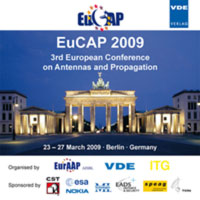Improvement and Validation of Design Tools for Antennas of Space Instruments Working in Terahertz Frequency Range
Konferenz: EuCAP 2009 - 3rd European Conference on Antennas and Propagation
23.03.2009 - 27.03.2009 in Berlin, Germany
Tagungsband: EuCAP 2009
Seiten: 4Sprache: EnglischTyp: PDF
Persönliche VDE-Mitglieder erhalten auf diesen Artikel 10% Rabatt
Autoren:
Hartmann, Jürgen; Habersack, Jürgen; Steiner, Hans-Jürgen (Astrium GmbH - Satellites, Measurement Technology – ASP 81, 81663 Munich, Germany)
Inhalt:
For validation of RF pattern performance the modelling and simulation of complex antennas is an important step in the design process. The availability of efficient design tools and processing capacity of state-of-the-art computers allows an increasing high reliability on the calculation results. For higher frequencies above Ka-Band and mainly in the mm-wave frequency range, additional parameters and higher data rates of antenna models are necessary in order to maintain the required pattern prediction accuracy. During several studies for ESA/ESTEC the accuracy of pattern prediction could subsequently be improved. It could be proven that the requirement of high resoluteness surface data of the analyzed antenna reflectors and the amplitude and phase behaviour of the feed systems is necessary. The complex pattern of the feeds is mainly important if feed systems like quasi-optical networks are applied. Within this paper, a highly accurate surface measurement of a 1.5 m parabolic reflector antenna with an accuracy of 1 .. 2 micron will be described. Secondly, developments in highly stable RF test setup for acquisition of amplitude and phase data of the applied quasi-optical networks at 500 GHz will be described. The data are foreseen to be used in an improved simulation model of the ADMIRALS 500 GHz Rx-module and the ADMIRALS representative test object.


